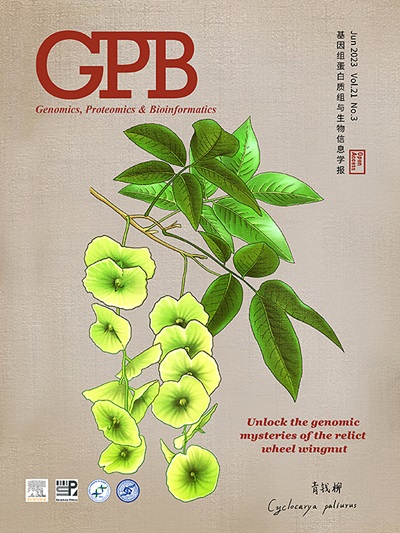Multi-omics Data Reveal the Effect of Sodium Butyrate on Gene Expression and Protein Modification in Streptomyces
IF 7.9
2区 生物学
Q1 GENETICS & HEREDITY
引用次数: 0
Abstract
Streptomycetes possess numerous gene clusters and the potential to produce a large amount of natural products. Histone deacetylase (HDAC) inhibitors play an important role in the regulation of histone modifications in fungi, but their roles in prokaryotes remain poorly understood. Here, we investigated the global effects of the HDAC inhibitor, sodium butyrate (SB), on marine-derived Streptomyces olivaceus FXJ 8.021, particularly focusing on the activation of secondary metabolite biosynthesis. The antiSMASH analysis revealed 33 secondary metabolite biosynthetic gene clusters (BGCs) in strain FXJ 8.021, among which the silent lobophorin BGC was activated by SB. Transcriptomic data showed that the expression of genes involved in lobophorin biosynthesis (ge00097–ge00139) and CoA-ester formation (e.g., ge02824), as well as the glycolysis/gluconeogenesis pathway (e.g., ge01661), was significantly up-regulated in the presence of SB. Intracellular CoA-ester analysis confirmed that SB triggered the biosynthesis of CoA-ester, thereby increasing the precursor supply for lobophorin biosynthesis. Further acetylomic analysis revealed that the acetylation levels on 218 sites of 190 proteins were up-regulated and those on 411 sites of 310 proteins were down-regulated. These acetylated proteins were particularly enriched in transcriptional and translational machinery components (e.g., elongation factor GE04399), and their correlations with the proteins involved in lobophorin biosynthesis were established by protein–protein interaction network analysis, suggesting that SB might function via a complex hierarchical regulation to activate the expression of lobophorin BGC. These findings provide solid evidence that acetylated proteins triggered by SB could affect the expression of genes involved in the biosynthesis of primary and secondary metabolites in prokaryotes.
多组学数据揭示丁酸钠对链霉菌基因表达和蛋白质修饰的影响
链霉菌拥有众多的基因簇,并具有生产大量天然产品的潜力。组蛋白去乙酰化酶(HDAC)抑制剂在调节真菌中的组蛋白修饰方面发挥着重要作用,但人们对 HDAC 在原核生物中的作用知之甚少。在这里,我们描述了 HDAC 抑制剂丁酸钠(SB)对海洋来源的橄榄链霉菌 FXJ 8.021 的整体影响,尤其是对次生代谢物生物合成的激活作用。反SMASH 分析发现,在菌株 FXJ 8.021 中有 33 个次生代谢物生物合成基因簇(BGC),其中沉默的叶鞘素 BGC 被 SB 激活。转录组数据显示,在 SB 存在的情况下,参与叶鞘素生物合成(ge00097-ge00139)、CoA-酯形成(如 ge02824)以及糖酵解/糖酮生成途径(如 ge01661)的基因表达主要上调。细胞内 CoA-酯分析证实,SB 触发了 CoA-酯的生物合成,从而增加了叶绿素生物合成的前体供应。进一步的乙酰化组分析显示,190 个蛋白质的 218 个乙酰化位点的乙酰化水平上调,310 个蛋白质的 411 个位点的乙酰化水平下调。这些被乙酰化的蛋白质尤其富集于转录和翻译机制成分(如延伸因子 GE04399)中,并且通过蛋白质-蛋白质相互作用网络分析确定了它们与参与小叶花青素生物合成的蛋白质之间的相关性,这表明 SB 可能通过复杂的分级调控来激活小叶花青素 BGC 的表达。这些发现提供了确凿的证据,证明 SB 触发的乙酰化蛋白可影响原核生物中初级和次级代谢产物生物合成基因的表达。
本文章由计算机程序翻译,如有差异,请以英文原文为准。
求助全文
约1分钟内获得全文
求助全文
来源期刊

Genomics, Proteomics & Bioinformatics
Biochemistry, Genetics and Molecular Biology-Biochemistry
CiteScore
14.30
自引率
4.20%
发文量
844
审稿时长
61 days
期刊介绍:
Genomics, Proteomics and Bioinformatics (GPB) is the official journal of the Beijing Institute of Genomics, Chinese Academy of Sciences / China National Center for Bioinformation and Genetics Society of China. It aims to disseminate new developments in the field of omics and bioinformatics, publish high-quality discoveries quickly, and promote open access and online publication. GPB welcomes submissions in all areas of life science, biology, and biomedicine, with a focus on large data acquisition, analysis, and curation. Manuscripts covering omics and related bioinformatics topics are particularly encouraged. GPB is indexed/abstracted by PubMed/MEDLINE, PubMed Central, Scopus, BIOSIS Previews, Chemical Abstracts, CSCD, among others.
 求助内容:
求助内容: 应助结果提醒方式:
应助结果提醒方式:


